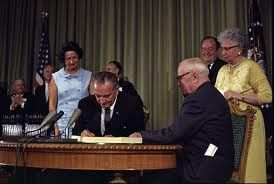Cross posted from Stars Hollow Gazette
 The main purpose our blogging is to communicate our ideas, opinions, and stories both fact and fiction. The best part about the the blogs is information that we might not find in our local news, even if we read it online. Sharing that information is important, especially if it educates, sparks conversation and new ideas. We have all found places that are our favorites that we read everyday, not everyone’s are the same. The Internet is a vast place. Unlike “Punting the Pundits which focuses on opinion pieces mostly from the mainstream media and the larger news web sites, “Around the Blogosphere” will focus more on the medium to smaller blogs and articles written by some of the anonymous and not so anonymous writers and links to some of the smaller pieces that don’t make it to “Pundits” by Krugman, Baker, etc.
The main purpose our blogging is to communicate our ideas, opinions, and stories both fact and fiction. The best part about the the blogs is information that we might not find in our local news, even if we read it online. Sharing that information is important, especially if it educates, sparks conversation and new ideas. We have all found places that are our favorites that we read everyday, not everyone’s are the same. The Internet is a vast place. Unlike “Punting the Pundits which focuses on opinion pieces mostly from the mainstream media and the larger news web sites, “Around the Blogosphere” will focus more on the medium to smaller blogs and articles written by some of the anonymous and not so anonymous writers and links to some of the smaller pieces that don’t make it to “Pundits” by Krugman, Baker, etc.
We encourage you to share your finds with us. It is important that we all stay as well informed as we can.
Follow us on Twitter @StarsHollowGzt
This is an Open Thread.
The mid-Summer Doldrums are here, sometimes called the “Lazey, Hazey Days of Summer” and there isn’t much happening. The news media is focused on Mayoral candidate Anthony Weiner, who continues to embarrass himself with his lack of self-control. No one loves Larry Summers, even the White House has backed off nominating him for the Federal Reserve chair.
Joining other cities, Philadelphia is suing the world’s biggest banks over LIBOR, the interest rate fixing scheme that possibly cost municipalities billions of dollars:
he parent banks named in the Philadelphia complaint are Bank of America Corp, Barclays Bank Plc, Citigroup Inc, Credit Suisse Group AG, Deutsche Bank AG, JPMorgan Chase & Co, Royal Bank of Canada, Royal Bank of Scotland and UBS AG. [..]
The U.S. municipalities claim that they lost money when they received lower interest rate payments than they should have, or had to pay artificially inflated rates because of the alleged manipulation.
Philadelphia also said local governments were forced to pay “sometimes devastating” penalties to terminate investment agreements.
Russian President Vladimir Putin went fishing and something smells fishy about his tale.
Video footage released by the Kremlin last week showed Putin dressed in camouflage fatigues and sunglasses, fishing, driving a motorboat and petting reindeer in a remote region of Siberia with his prime minister and defense minister.
But the images of the 60-year-old president hauling in a pike which the Kremlin said weighed 21 kg (46 pounds) proved too much for some Russians to swallow.
Within hours, online satirists were questioning whether the incident was staged and whether the pike was really as big as the Kremlin said.
An EU diplomat met with ousted Egyptian President Mohammed Morsi and it is rumored that the military backed government is attempting to restore secret police units of the Mubarik regime.
Egypt’s state security investigations service, Mabahith Amn ad-Dawla, a wing of the police force under President Mubarak, and a symbol of police oppression, was supposedly closed in March 2011 – along with several units within it that investigated Islamist groups and opposition activists. The new national security service (NSS) was established in its place.
But following Saturday’s massacre of at least 83 Islamists, interior minister Mohamed Ibrahim announced the reinstatement of the units, and referred to the NSS by its old name. He added that experienced police officers sidelined in the aftermath of the 2011 revolution would be brought back into the fold.
Police brutality also went unchecked under Morsi, who regularly failed to condemn police abuses committed during his presidency. But Ibrahim’s move suggests he is using the ousting of Morsi – and a corresponding upsurge in support for Egypt’s police – as a smokescreen for the re-introduction of pre-2011 practices.
In his latest offer of a “grand bargain” with the recalcitrant Republicans, Jon Walker reports that President Obama is resorting to negotiating tactics used by his predecessor, George W. Bush to cut a deal. Also, even with Social Security still on the table, Obama is still unable to come to budget agreement.
The fighting in Syria continues, over half of Mexico lives in poverty and after his Brazilian tour, Pope Francis went home.
At this writing, we are waiting for the verdict in the Bradley Manning trial, barring any miracle of common sense and jurisprudence, we can all surmise what the verdict will be on all counts.
Now that Bradley Manning has bee fond guilty of 20 violations of an antiquated law from WWI, the sentencing phase begins which could bring up to 136 years in prison.
I’m going to the beach and contemplate those “Lazey, Hazey Days of Summer.”
Television, rock and roll and teenagers. In the late 1950s, when television and rock and roll were new and when the biggest generation in American history was just about to enter its teens, it took a bit of originality to see the potential power in this now-obvious combination. The man who saw that potential more clearly than any other was a 26-year-old native of upstate New York named Dick Clark, who transformed himself and a local Philadelphia television program into two of the most culturally significant forces of the early rock-and-roll era. His iconic show, American Bandstand, began broadcasting nationally on this day in 1957, beaming images of clean-cut, average teenagers dancing to the not-so-clean-cut Jerry Lee Lewis’ “Whole Lotta Shakin’ Goin’ On” to 67 ABC affiliates across the nation.


 The USS Nautilus was constructed under the direction of U.S. Navy Captain Hyman G. Rickover, a brilliant Russian-born engineer who joined the U.S. atomic program in 1946. In 1947, he was put in charge of the navy’s nuclear-propulsion program and began work on an atomic submarine. Regarded as a fanatic by his detractors, Rickover succeeded in developing and delivering the world’s first nuclear submarine years ahead of schedule. In 1952, the Nautilus’ keel was laid by President Harry S. Truman, and on January 21, 1954, first lady Mamie Eisenhower broke a bottle of champagne across its bow as it was launched into the Thames River at Groton, Connecticut. Commissioned on September 30, 1954, it first ran under nuclear power on the morning of January 17, 1955.
The USS Nautilus was constructed under the direction of U.S. Navy Captain Hyman G. Rickover, a brilliant Russian-born engineer who joined the U.S. atomic program in 1946. In 1947, he was put in charge of the navy’s nuclear-propulsion program and began work on an atomic submarine. Regarded as a fanatic by his detractors, Rickover succeeded in developing and delivering the world’s first nuclear submarine years ahead of schedule. In 1952, the Nautilus’ keel was laid by President Harry S. Truman, and on January 21, 1954, first lady Mamie Eisenhower broke a bottle of champagne across its bow as it was launched into the Thames River at Groton, Connecticut. Commissioned on September 30, 1954, it first ran under nuclear power on the morning of January 17, 1955.
 The main purpose our blogging is to communicate our ideas, opinions, and stories both fact and fiction. The best part about the the blogs is information that we might not find in our local news, even if we read it online. Sharing that information is important, especially if it educates, sparks conversation and new ideas. We have all found places that are our favorites that we read everyday, not everyone’s are the same. The Internet is a vast place. Unlike “
The main purpose our blogging is to communicate our ideas, opinions, and stories both fact and fiction. The best part about the the blogs is information that we might not find in our local news, even if we read it online. Sharing that information is important, especially if it educates, sparks conversation and new ideas. We have all found places that are our favorites that we read everyday, not everyone’s are the same. The Internet is a vast place. Unlike “

